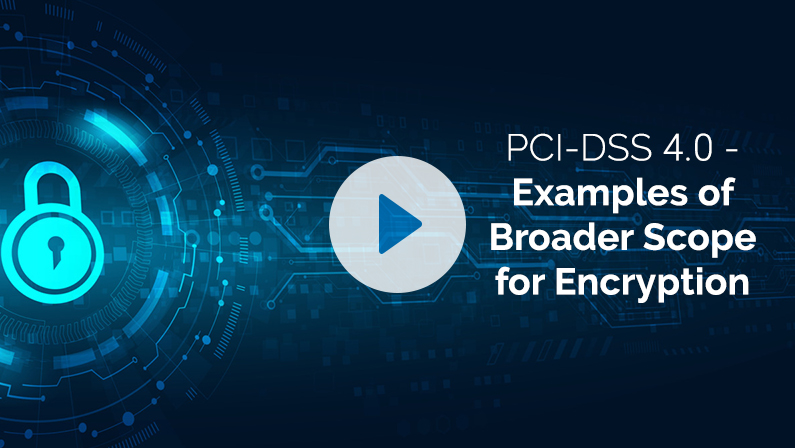-
Broader Scope for Encryption
The broader scope for encryption in PCI-DSS 4.0 expands the requirements for protecting cardholder data, particularly focusing on encryption both at rest and in transit, to address modern cybersecurity threats more effectively. Here are specific examples of how organizations can implement these expanded encryption requirements:
Example 1:
Encryption of Data at Rest
Implementation Strategy:
Implement strong encryption for all stored cardholder data, using advanced encryption standards such as AES-246. Ensure that encryption keys are managed securely, with strict access controls, key rotation policies, and the use of hardware security modules (HSMs) for key storage to prevent unauthorized access.
Example 2:
Encryption of Data in Transit
Implementation Strategy: Use strong encryption protocols, such as TLS 1.2 or higher, for all data transmitted over public networks. This includes not only data transmitted between customers and businesses but also between internal systems and third-party services. Regularly review and update the configurations to disable weak ciphers and ensure compliance with the latest security standards.
Example 3:
End-to-End Encryption (E2EE)
Implementation Strategy:
Implement end-to-end encryption for payment transactions, ensuring that cardholder data is encrypted from the point of entry (e.g., point of sale or online payment gateway) until it reaches the secure processing environment. This approach minimizes the risk of data being intercepted or compromised during transmission.
Example 4:
Encryption for Mobile Devices
Implementation Strategy: For organizations that use mobile devices to process payments, implement encryption solutions that secure cardholder data on these devices. This includes encrypting data before it is stored or transmitted by the device, using secure coding practices for mobile applications, and ensuring that mobile devices comply with organizational security policies.
These examples showcase how the expanded focus on encryption in PCI-DSS 4.0 is intended to provide a comprehensive framework for protecting cardholder data against unauthorized access and potential data breaches. By implementing robust encryption strategies across all areas where cardholder data is stored, processed, or transmitted, organizations can significantly enhance their data security posture and compliance with PCI-DSS requirements.





